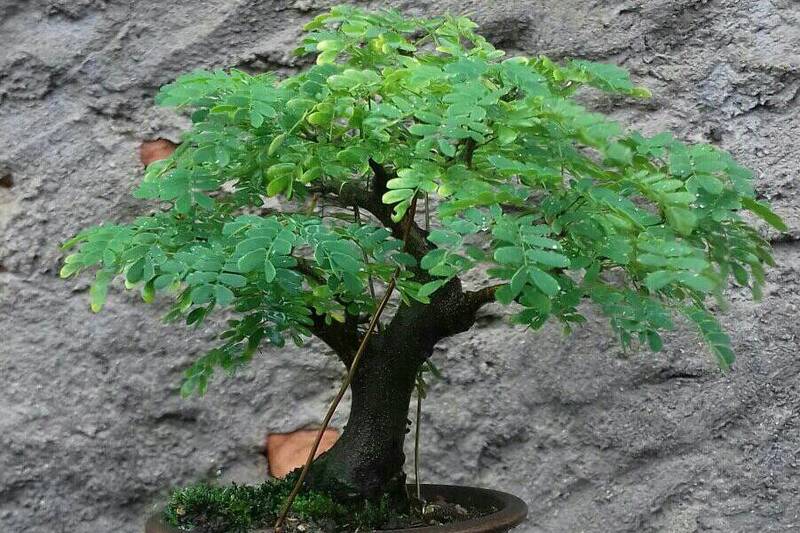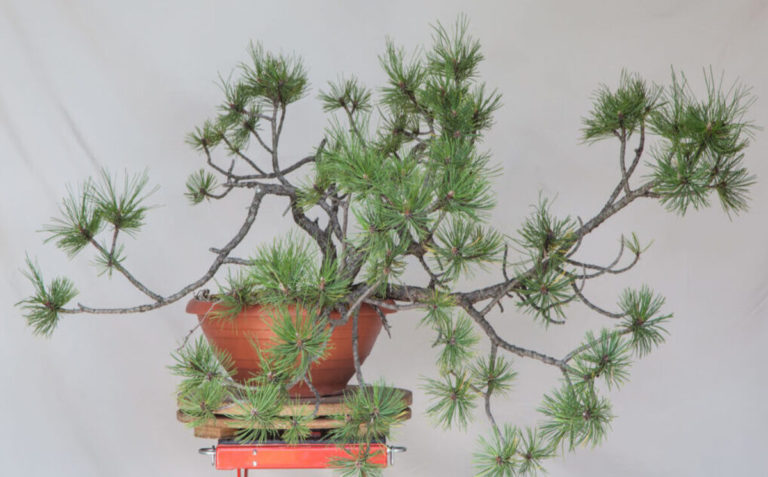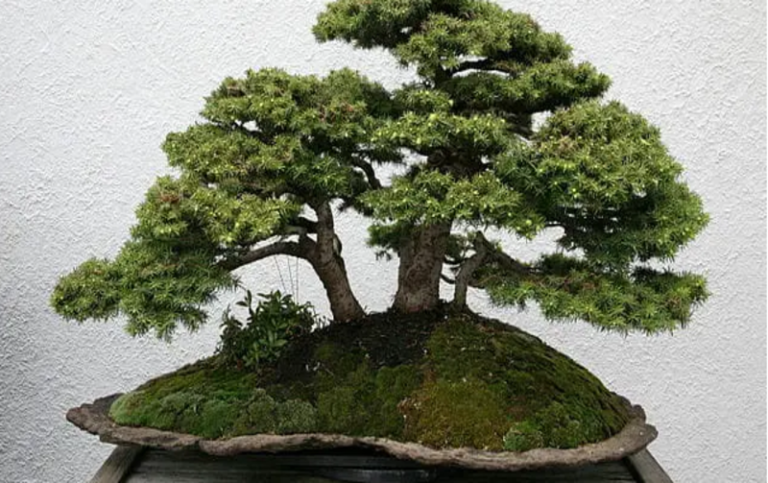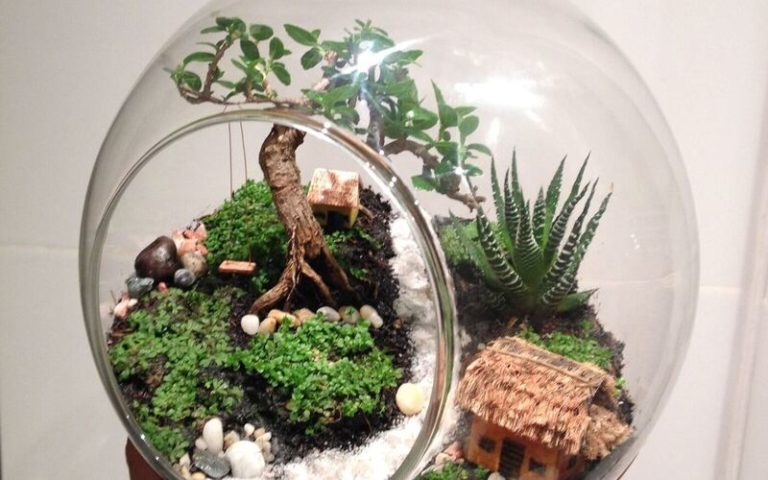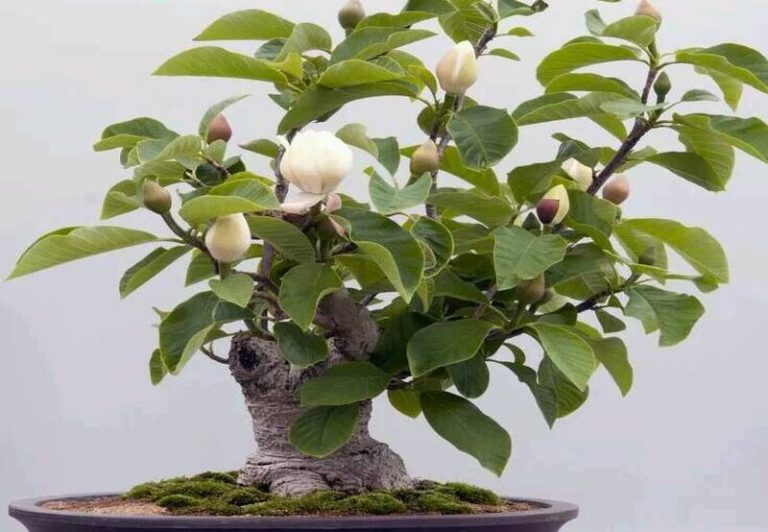Brazilian Rain Tree Bonsai: A Symbol of Strength and Resilience
Brazilian Rain Tree Bonsai is a type of bonsai tree that originates from the tropical regions of Brazil. It is known for its unique, delicate foliage and its graceful, twisting trunk.
What is a Brazilian Rain Tree Bonsai?
Brazilian Rain Tree Bonsai is a type of bonsai tree that originates from Brazil. Its scientific name is Pithecellobium tortum, and it belongs to the Legume family. This tree is known for its delicate, feathery foliage and graceful, twisting trunk that resembles the movement of a dance.
In the wild, the tree can grow up to 50 feet tall, but as a bonsai, it is grown in a small size, from 6 inches to 3 feet tall. Bonsai fans like the Brazilian Rain Tree Bonsai because of how unique it looks and how well it helps them relax.
History and Origins of Brazilian Rain Tree Bonsai
Commonly referred to as “Catinga de Porco” or “Porcupine Wood,” the Brazilian Rain Tree Bonsai is endemic to the country’s tropical areas. It was a French botanist called Auguste de Saint-Hilaire who traveled to Brazil and gathered the first samples of this tree, which were discovered in the early 1800s.
Since then, bonsai fans all over the world have grown more interested in the Brazilian Rain Tree Bonsai. People who do bonsai, which is the art of growing small trees in pots, love it because of its unique, tiny leaves and graceful stems.
Since then, the Brazilian Rain Tree Bonsai has grown in fame among bonsai fans all over the world. Its unique, tiny leaves and graceful base make it a favorite among people who practice bonsai, which is the art of growing small trees in pots.
Types of Brazilian Rain Tree Bonsai
There are several types of Brazilian Rain Tree Bonsai, each with their own unique features. Some of the most common types of Brazilian Rain Tree Bonsai include:
Shohin: These are small, narrow trees that are perfect for places with less room. They usually don’t get taller than 10 inches and are great for people who are just starting out with bonsai.
Chuhin: These trees are a little bit bigger than Shohin and can grow up to 20 inches tall. They are best for people who have done bonsai for a while.
Omono: The maximum height of one of these magnificent trees is three feet. Bonsai trees often get intensive care and attention from knowledgeable owners.
Multi-trunk: These trees have multiple trunks that grow from a single root system. They are often grown in groups and can create a beautiful, natural-looking forest scene.
Banyan style: This style of Brazilian Rain Tree Bonsai involves creating a tree with aerial roots that hang down from the branches. It creates a unique and striking appearance.
It is crucial to give your Brazilian Rain Tree Bonsai the attention and care it needs to flourish and grow into the form you want.
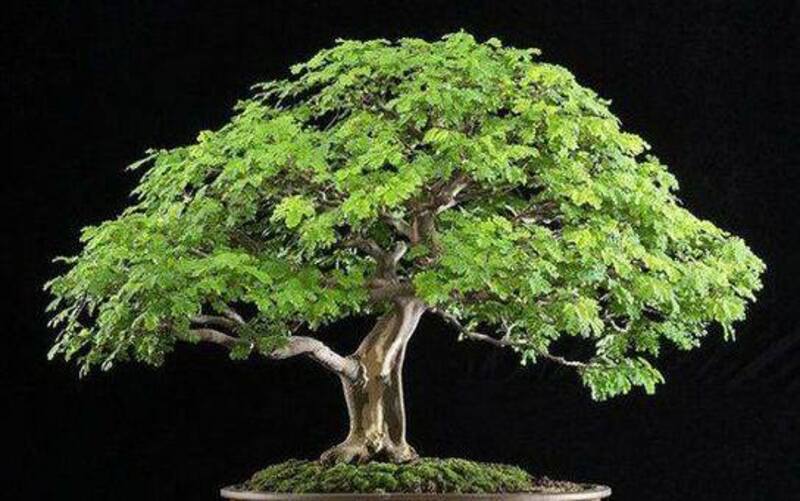
Brazilian Rain Tree Bonsai and its Symbolism
Different cultures give the Brazilian Rain Tree Bonsai a lot of meaning and symbols. In Japan, where the art of bonsai began, people think that bonsai trees make the world a more peaceful, balanced, and harmonious place. People think of the delicate and beautiful look of the Brazilian Rain Tree Bonsai as a sign of modesty, grace, and peace.
In many cultures, the tree is also believed to bring good luck and fortune. The twisting trunk and delicate branches are seen as a symbol of resilience and flexibility, representing the ability to adapt to changing circumstances. Some people also believe that the tree has healing properties and can help reduce stress and promote relaxation.
The unique look and meaning of the Brazilian Rain Tree Bonsai make it a popular choice among bonsai fans. Many people like the task of taking care of and shaping the tree, as well as how it can calm and focus the mind and body.
Characteristics of the Brazilian Rain Tree Bonsai
The Brazilian Rain Tree Bonsai is known for its delicate foliage, graceful trunk, and unique characteristics. Here are some of the most notable characteristics of the Brazilian Rain Tree Bonsai:
- Leaves: The small leaves on the Brazilian Rain Tree Bonsai are made up of several leaflets. The leaves are a bright green color and look soft and fluffy.
- Trunk: The trunk of the Brazilian Rain Tree Bonsai is slender and elegant, with a slightly twisted and contorted appearance. The bark is smooth and gray, and may develop fissures and wrinkles as the tree ages.
- Flowers: The Brazilian Rain Tree Bonsai produces small, fragrant flowers that bloom in clusters. The flowers are a pale yellow color and have a sweet, pleasant scent.
- Roots: The roots of the Brazilian Rain Tree Bonsai are slender and delicate and can be trained to create unique shapes and formations.
- Growth rate: The Brazilian Rain Tree Bonsai is a relatively fast-growing tree, which means that it requires regular pruning and maintenance to keep it in shape.
- Hardiness: The Brazilian Rain Tree Bonsai is a tropical tree that is sensitive to cold temperatures. It should be kept indoors during the winter months or in a warm, protected environment.
Overall, the Brazilian Rain Tree Bonsai is a unique and beautiful tree that requires careful attention and maintenance to help it thrive and achieve its desired shape and size.
How to Grow a Brazilian Rain Tree Bonsai
Growing a Brazilian Rain Tree Bonsai can be a rewarding experience, but it requires patience, attention, and care. Here are the steps to growing a Brazilian Rain Tree Bonsai:
1. Choose the right location: Brazilian Rain Tree Bonsai trees thrive in warm, humid environments and should be kept indoors or in a warm, protected location outdoors. They need bright, indirect sunlight for several hours a day.
2. Select the right soil: Brazilian Rain Tree Bonsai trees prefer well-draining soil that is rich in organic matter. A mixture of bonsai soil and perlite or vermiculite works well.
3. Water the tree properly: Brazilian Rain Tree Bonsai trees require frequent watering, especially during the growing season. Water the tree thoroughly, making sure the soil is moist but not waterlogged. Allow the soil to dry out slightly before watering again.
4. Fertilize regularly: Brazilian Rain Tree Bonsai trees require regular feeding during the growing season. Use a balanced, water-soluble fertilizer every two weeks.
5. Prune and shape the tree: Brazilian Rain Tree Bonsai trees require regular pruning to maintain their desired shape and size. Prune the tree in the spring or early summer, removing any dead or damaged branches, as well as any branches that are growing in the wrong direction.
6. Repot the tree: Brazilian Rain Tree Bonsai trees should be repotted every two to three years to ensure that they have enough space to grow. Repot the tree in the spring, using fresh soil and a slightly larger container.
7. Protect the tree from pests and diseases: Brazilian Rain Tree Bonsai trees can be susceptible to pests and diseases, including spider mites, scale, and root rot. Regularly inspect the tree for signs of infestation or disease, and take prompt action to treat any problems.
With proper care and attention, a Brazilian Rain Tree Bonsai can thrive and become a beautiful and unique addition to your home or garden.
Benefits of Brazilian Rain Tree Bonsai
Aside from being a beautiful addition to your home or garden, the Brazilian Rain Tree Bonsai also offers several benefits:
Air purifying: Like many other plants, the Brazilian Rain Tree Bonsai helps to purify the air by removing harmful pollutants and toxins from the environment.
Stress relief: Caring for a bonsai tree, such as the Brazilian Rain Tree Bonsai, may be a peaceful and therapeutic hobby that can aid in the reduction of stress and anxiety.
Educational value: Taking care of a bonsai tree, such as the Brazilian Rain Tree Bonsai, may be a calming and therapeutic hobby that can help decrease tension and anxiety.
Decorative element: The Brazilian Rain Tree Bonsai is a unique and aesthetically pleasing plant that can add beauty and interest to your home or garden.
Meditation aid: Bonsai takes concentration and attention, making it a great hobby for anyone wishing to include meditation into their regular routine.
Humidity control: The Brazilian Rain Tree Bonsai thrives in a warm and humid environment, making it a natural way to help regulate the humidity levels in your home.
Overall, the Brazilian Rain Tree Bonsai is an excellent plant to have if you want a low-maintenance and visually appealing addition to your living area that provides various health and well-being advantages.
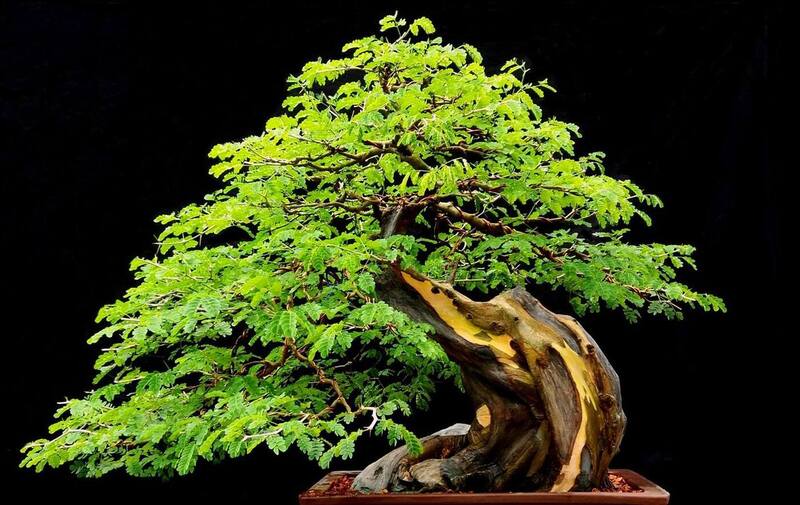
Styling and Design of Brazilian Rain Tree Bonsai
The Brazilian Rain Tree Bonsai can be styled and designed in a variety of ways to suit your personal taste and preferences. Here are some tips for styling and designing your Brazilian Rain Tree Bonsai:
- Select a pot: Choose a pot that is appropriate for the size and style of your tree. A simple, unglazed pot is often preferred, as it allows the focus to be on the tree rather than the pot.
- Determine the style: Determine whether you want your tree to be formal or casual, straight, slanting, or cascading. This will aid you in determining the form and orientation of the branches.
- Prune and shape: Regular pruning is necessary to maintain the shape and size of your Brazilian Rain Tree Bonsai. Use sharp pruning shears to remove any unwanted branches or foliage and shape the tree as desired.
- Wire the branches: You may use wire to guide the branches if you want to shape them in a certain direction. Keep in mind that leaving the wire on for an extended period of time might cause harm to the branches.
- Position the tree: Decide on the placement of your Brazilian Rain Tree Bonsai. It should be positioned in a bright, sunny location but protected from direct sunlight during the hottest parts of the day.
- Add accents: You can add accents to your Brazilian Rain Tree Bonsai to enhance its design, such as small stones, miniature figurines, or a small waterfall feature.
By following these tips, you can create a beautiful and unique Brazilian Rain Tree Bonsai that will add interest and beauty to your home or garden.
How to Care for a Brazilian Rain Tree Bonsai
Caring for a Brazilian Rain Tree Bonsai is relatively easy, but it does require some attention to ensure that it stays healthy and beautiful. Here are some tips for caring for your Brazilian Rain Tree Bonsai:
Watering: The Brazilian Rain Tree Bonsai requires frequent watering but should not be overwatered. Water the tree when the soil seems dry to the touch, but don’t let it dry entirely. To avoid waterlogging, make sure the pot has drainage holes.
Fertilizing: Use a balanced fertilizer every two weeks during the growing season (spring and summer) to promote healthy growth. During the dormant season (fall and winter), reduce fertilizing to once a month.
Pruning: Regular pruning is necessary to maintain the shape and size of your Brazilian Rain Tree Bonsai. Use sharp pruning shears to remove any unwanted branches or foliage, and shape the tree as desired.
Sunlight: The Brazilian Rain Tree Bonsai requires bright, indirect sunlight. It should be placed in a location that receives at least four to six hours of sunlight per day but is protected from direct sunlight during the hottest parts of the day.
Repotting: The Brazilian Rain Tree Bonsai should be repotted every two to three years, or when the roots have outgrown the pot. Repotting should be done in the spring using a well-draining soil mix.
Pest and disease control: The Brazilian Rain Tree Bonsai is typically resistant to pests and diseases, but scale insects or spider mites can occasionally cause problems. Use an insecticidal soap or horticultural oil to control these pests.
Winter care: During the winter, position the Brazilian Rain Tree Bonsai in a calm location with temperatures between 50 and 60 degrees Fahrenheit (10 and 15 degrees Celsius). Reduce watering and cease fertilizing during this time.
By following these care tips, your Brazilian Rain Tree Bonsai will thrive and provide you with years of beauty and enjoyment.
Brazilian Rain Tree Bonsai Care Sheet
| Aspect | Care Tips |
| Watering | When the soil seems dry, water the tree. Drain the pot to avoid waterlogging. |
| Fertilizing | Use a balanced fertilizer every two weeks in spring and summer and once a month in autumn and winter. |
| Pruning | Use sharp pruning shears to remove undesirable branches and leaves from your Brazilian Rain Tree Bonsai. |
| Sunlight | The Brazilian Rain Tree Bonsai needs bright, indirect sunshine, but should be shaded from direct sunlight during the warmest portions of the day. |
| Repotting | Spring is the best time to repot using a well-draining soil mix. |
| Pest and disease control | Spider mites and scale insects can occasionally attack the Brazilian Rain Tree Bonsai. Control pests with insecticidal soap or horticultural oil. |
| Winter care | Winterize the tree around 50-60°F (10-15°C). Stop fertilizing and watering. |
Conclusion
The Brazilian Rain Tree Bonsai exemplifies the aesthetics and craftsmanship of bonsai cultivation. It is a prized addition to any bonsai collection due to its singular characteristics, adaptability, and calming aura. As long as bonsai devotees continue to appreciate and cultivate this extraordinary species, the Brazilian Rain Tree Bonsai will continue to fascinate and inspire.
FAQ:
Q: What is a Brazilian Rain Tree Bonsai?
A: Brazilian Rain Tree Bonsai is a small, decorative tree grown in a container using the techniques of bonsai cultivation. It is a tropical tree with delicate foliage and a unique branching structure.
Q: Where is the Brazilian Rain Tree Bonsai native?
A: The Brazilian Rain Tree Bonsai is native to the rainforests of Brazil and other parts of South America.
Q: How long does the Brazilian Rain Tree Bonsai live?
A: With proper care, the Brazilian Rain Tree Bonsai can live for decades, even up to a hundred years.
Q: How tall does the Brazilian Rain Tree Bonsai grow?
A: Depending on the species and how it is grown and pruned, a Brazilian Rain Tree Bonsai can reach a height of 3-5 feet.
Q: Is Brazilian Rain Tree Bonsai easy to grow?
A: Due to its unique care requirements, the Brazilian Rain Tree Bonsai can be somewhat challenging to cultivate, but both novice and experienced bonsai devotees can cultivate it successfully with the appropriate knowledge and techniques.
Q: Does Brazilian Rain Tree Bonsai require a lot of sunlight?
A: Brazilian Rain Tree Bonsai requires bright, indirect sunlight, and should be placed in a spot that receives a minimum of 4-6 hours of sunlight daily.
Q: What is the best time to repot my Brazilian Rain Tree Bonsai?
A: The best time to repot Brazilian Rain Tree Bonsai is in the early spring, just before new growth begins.
Also Read:

